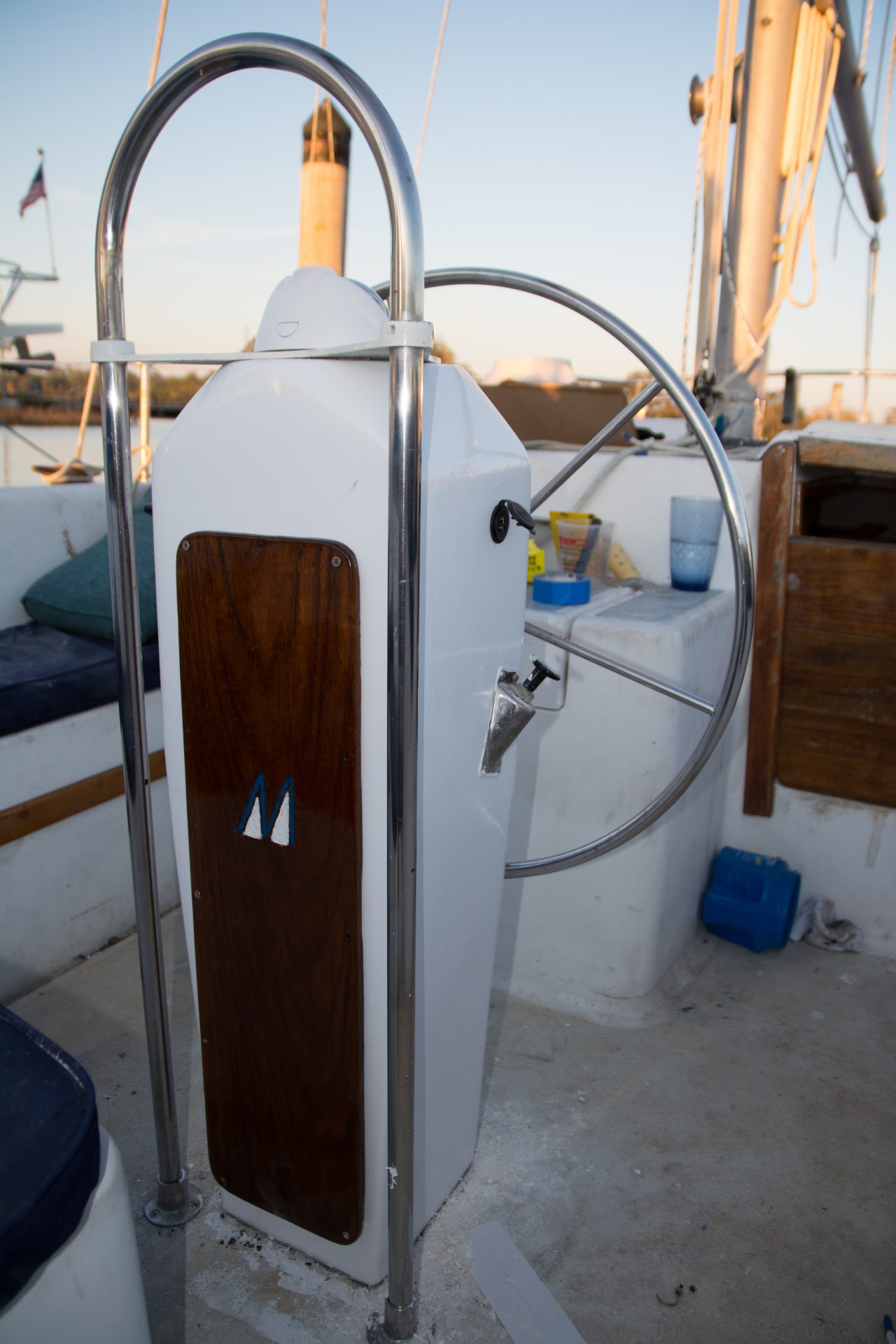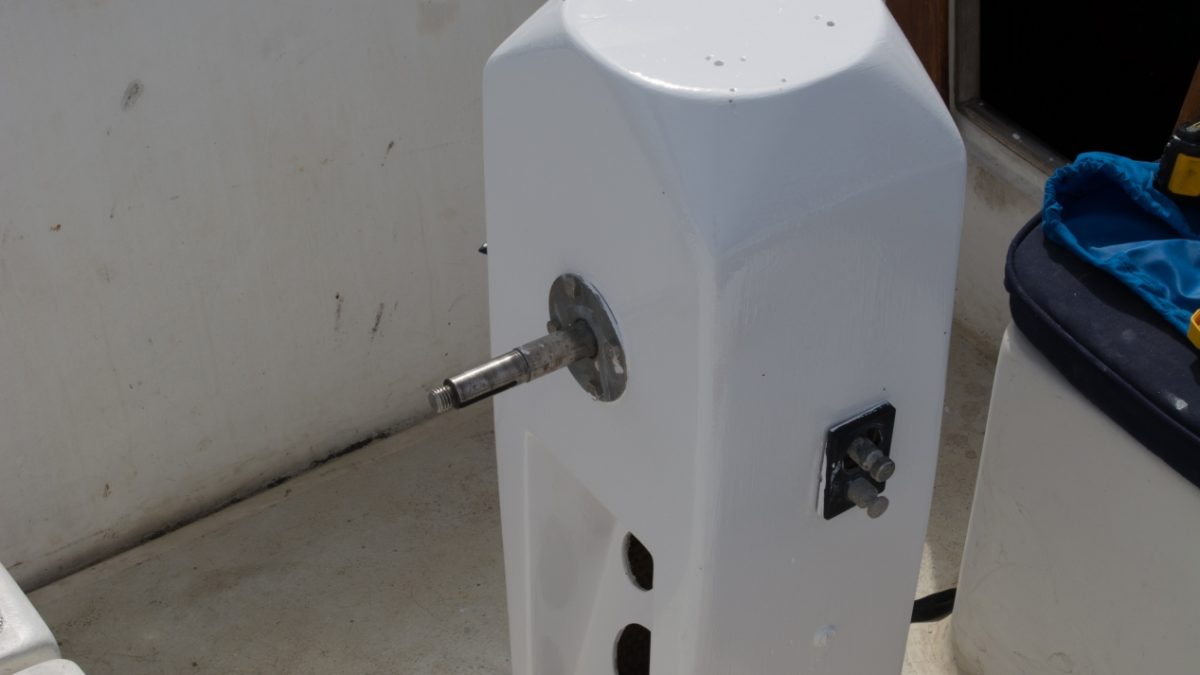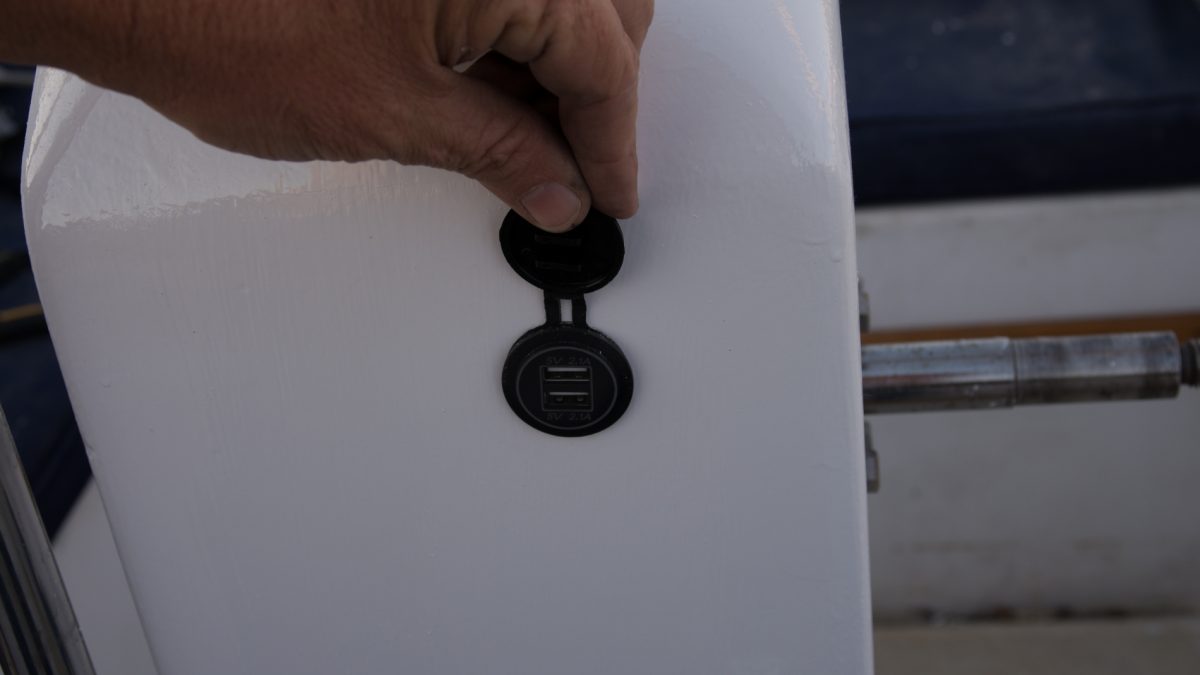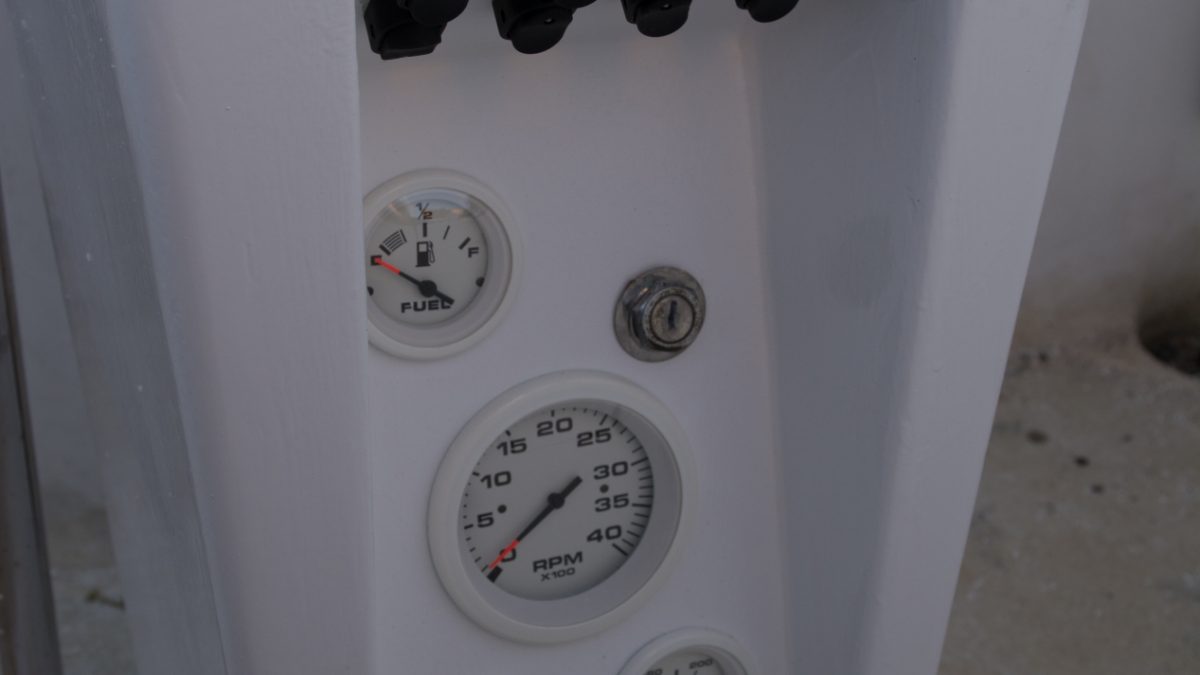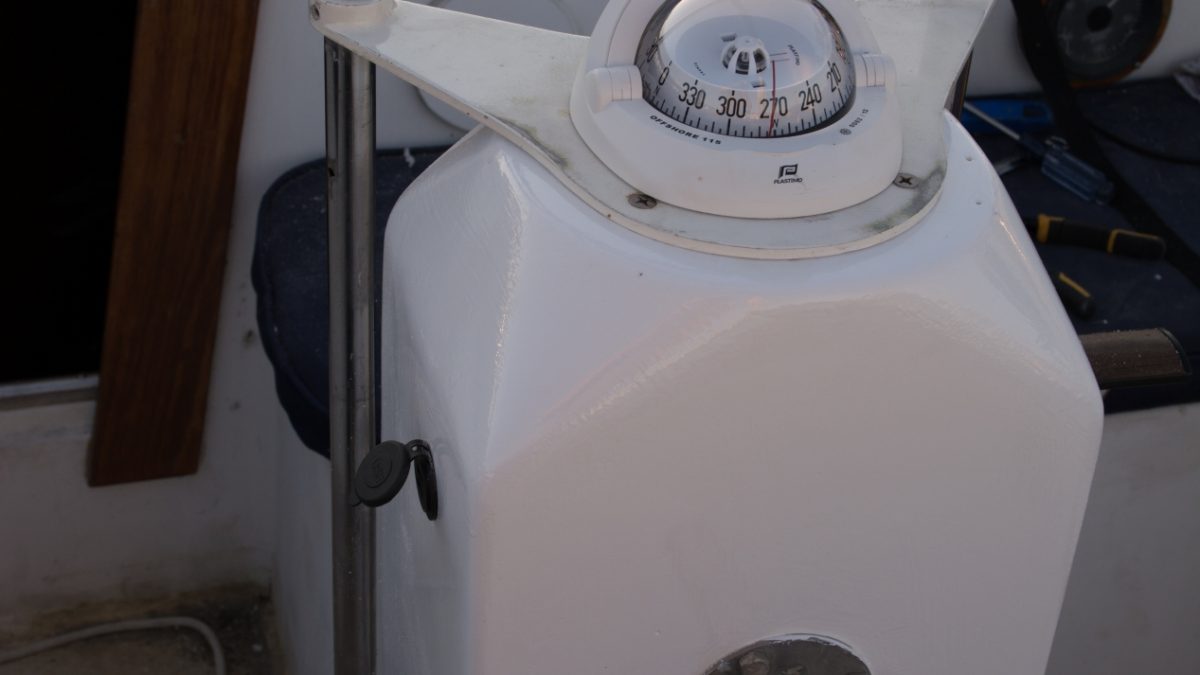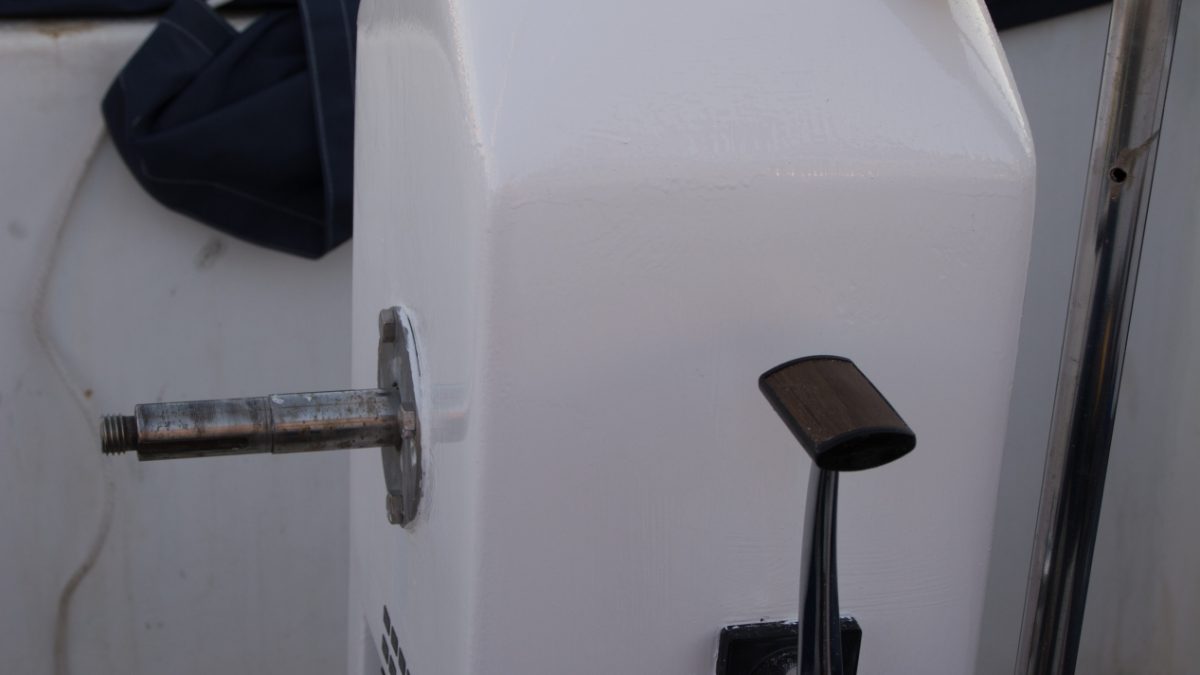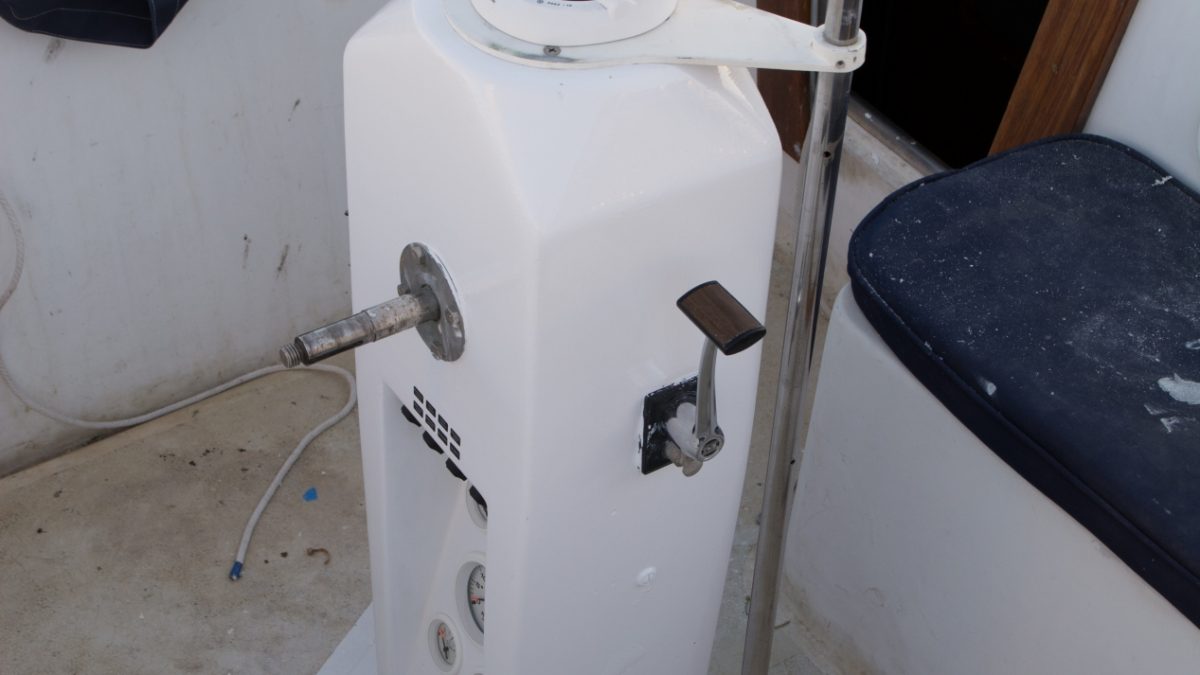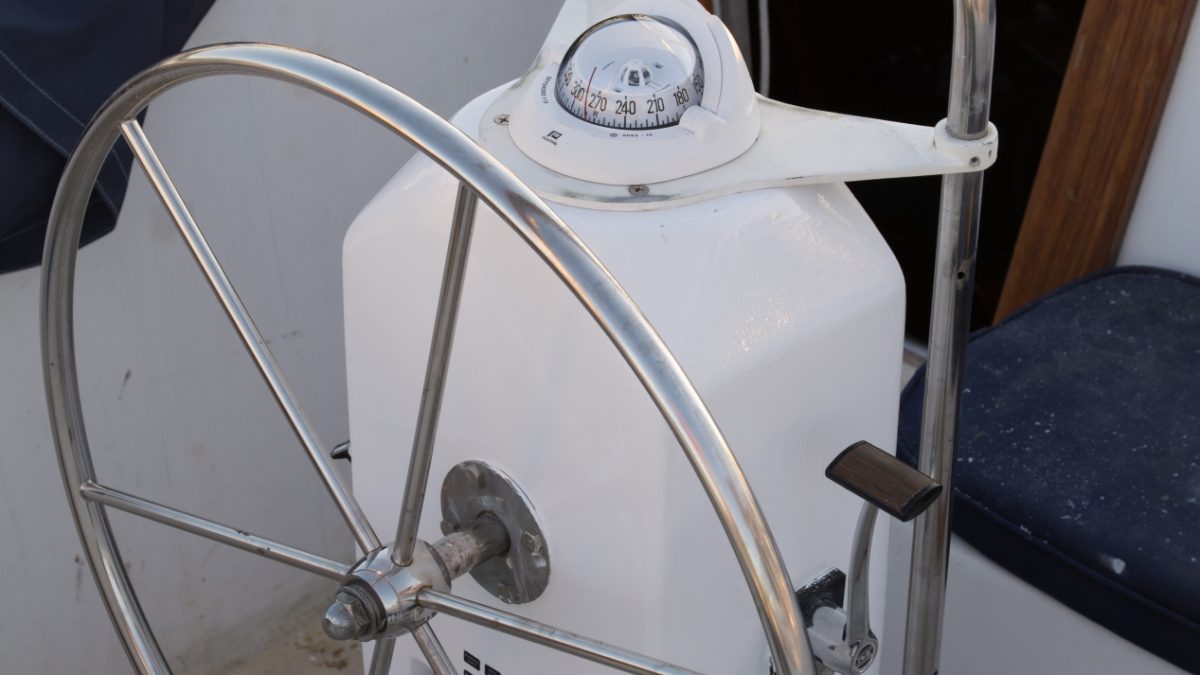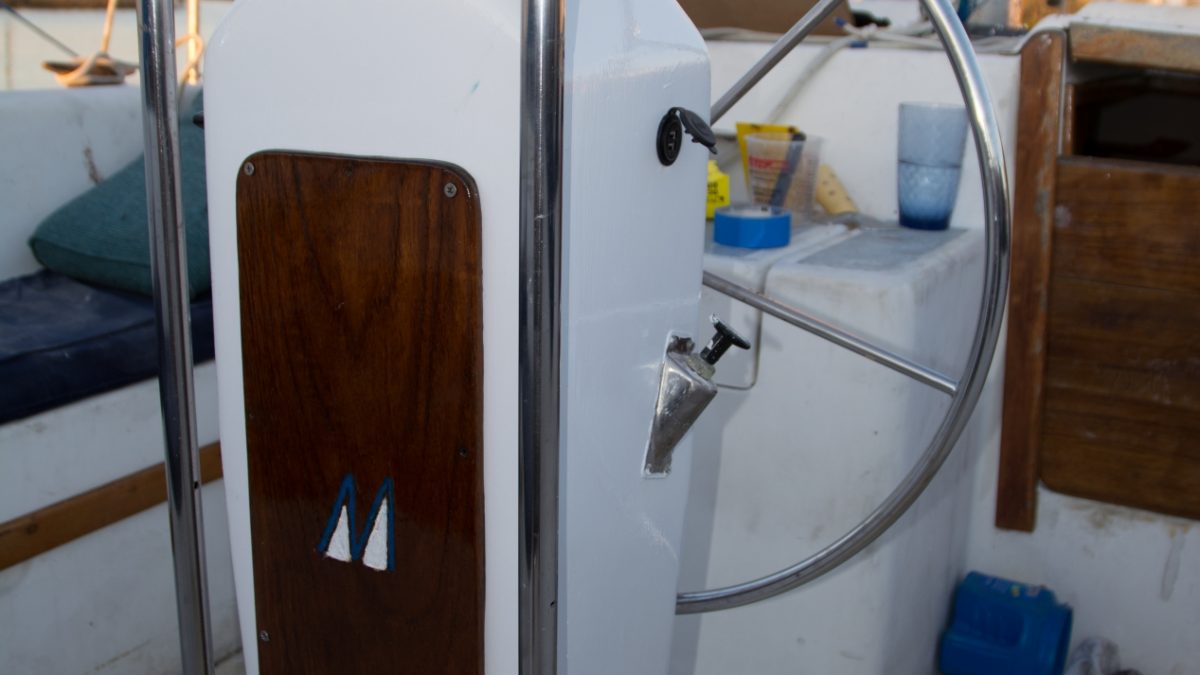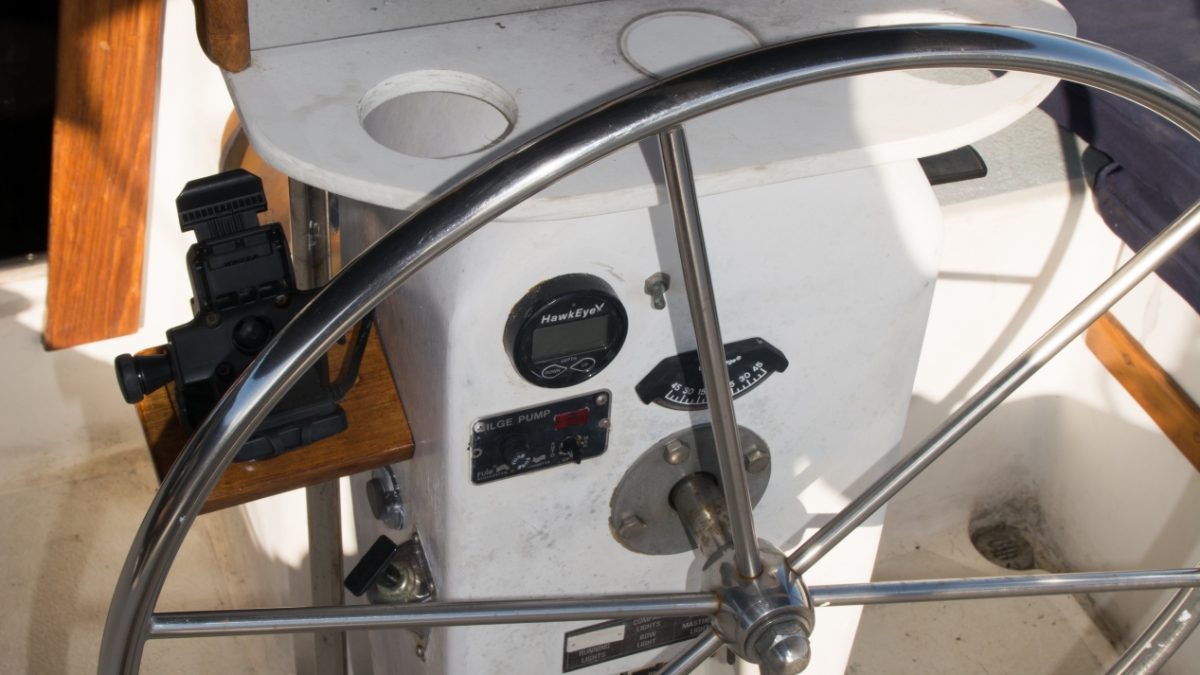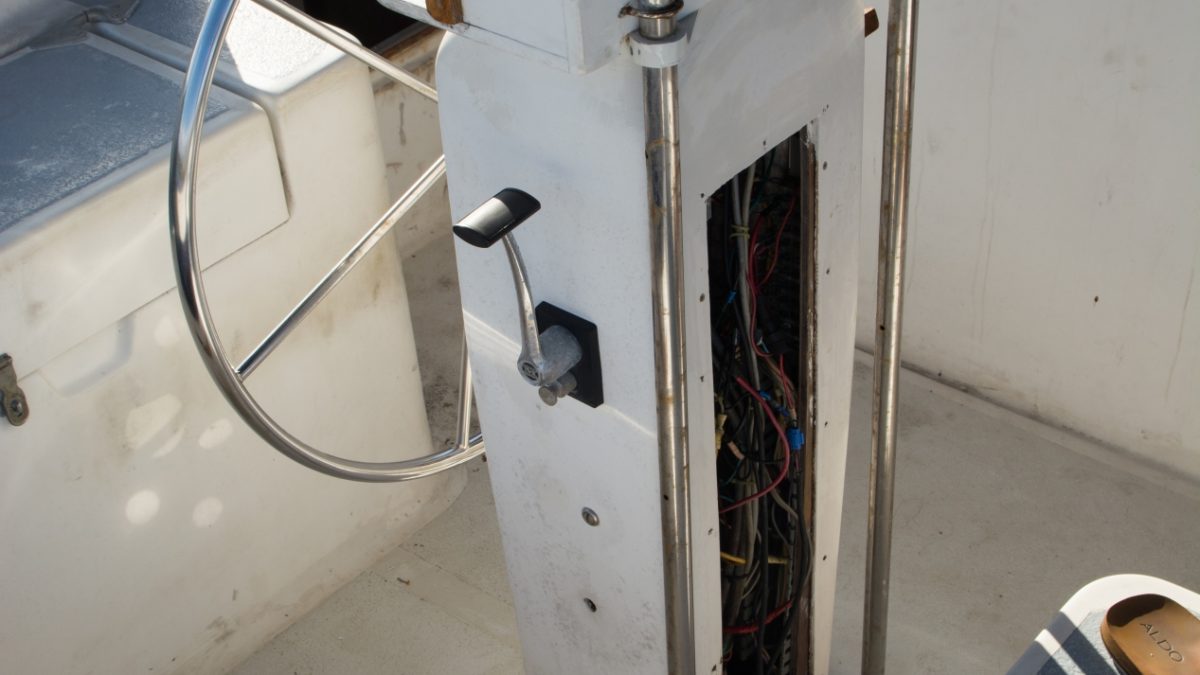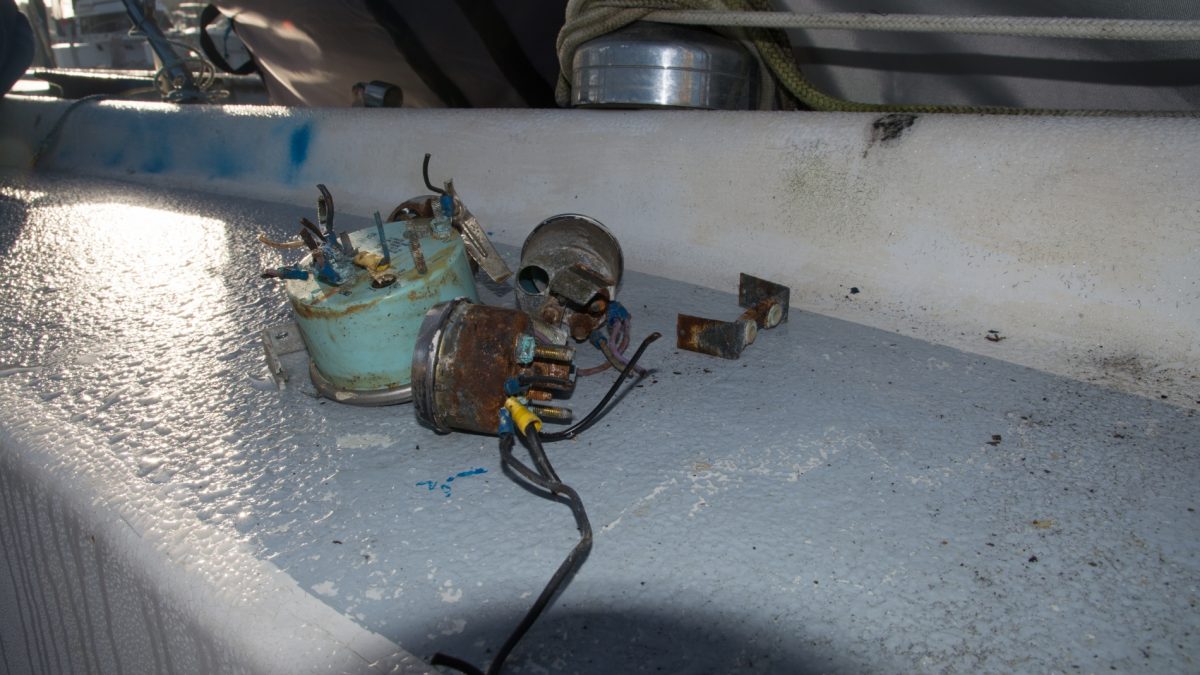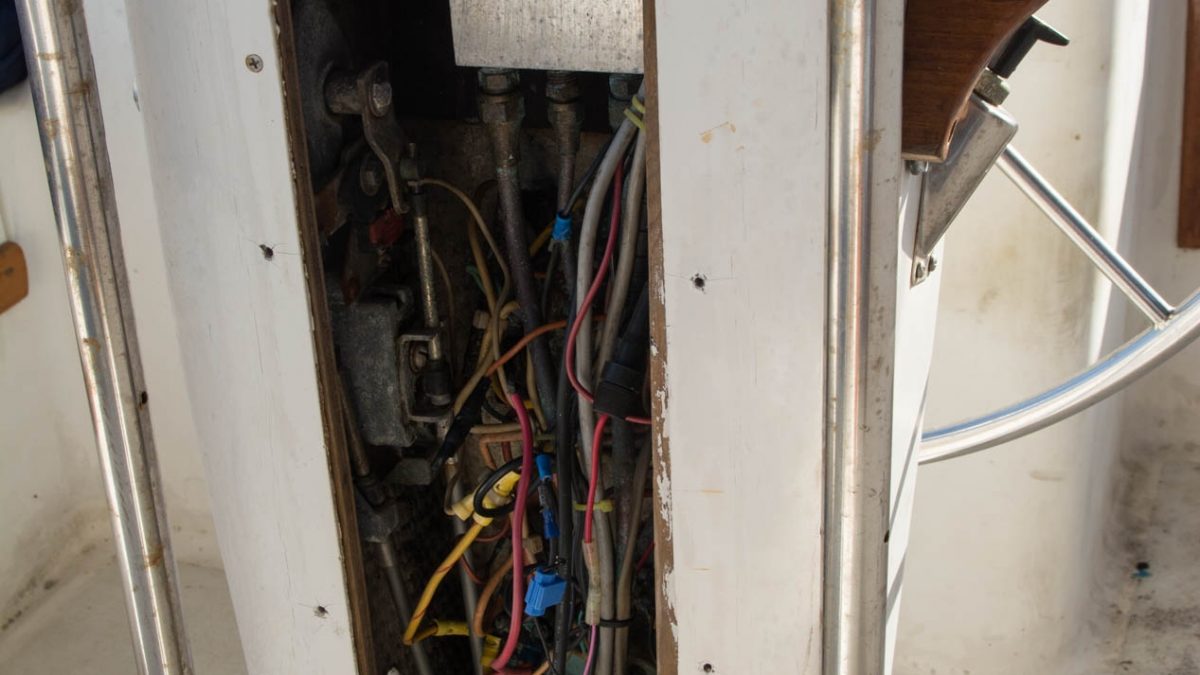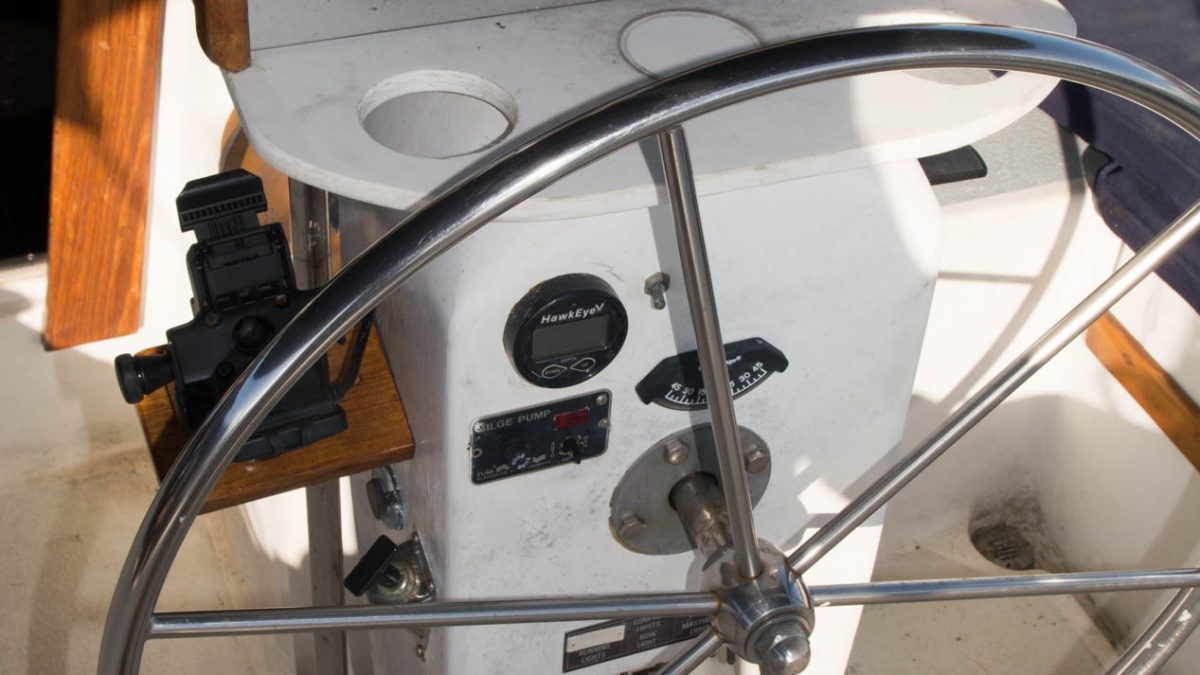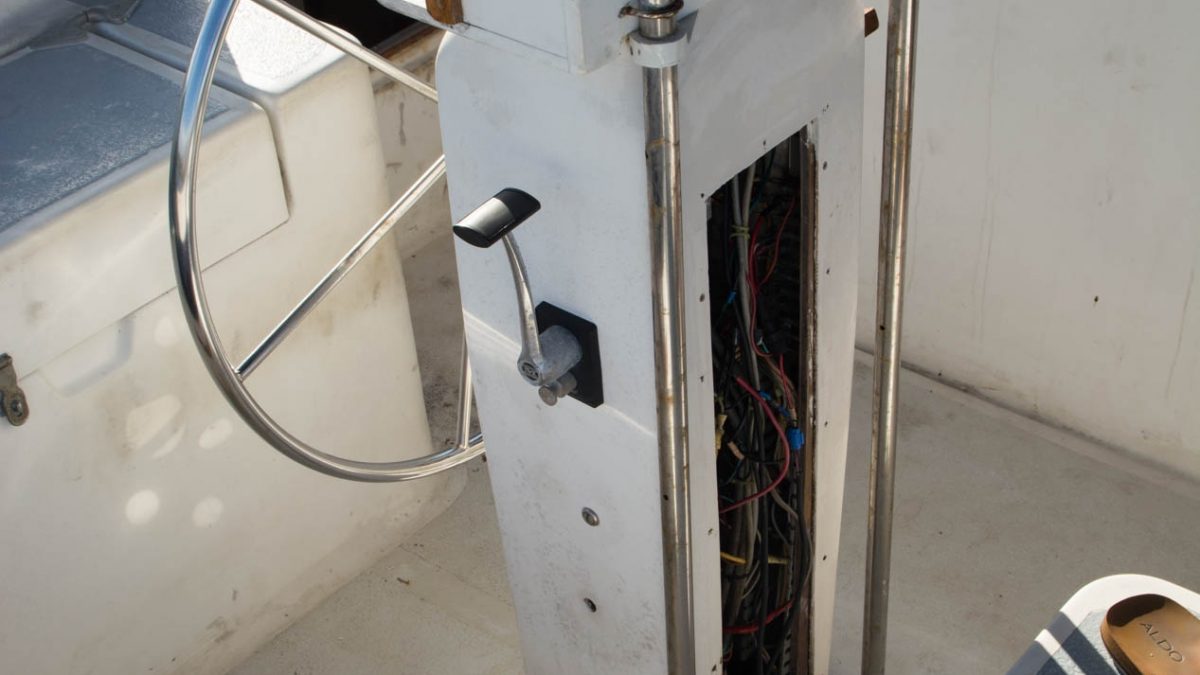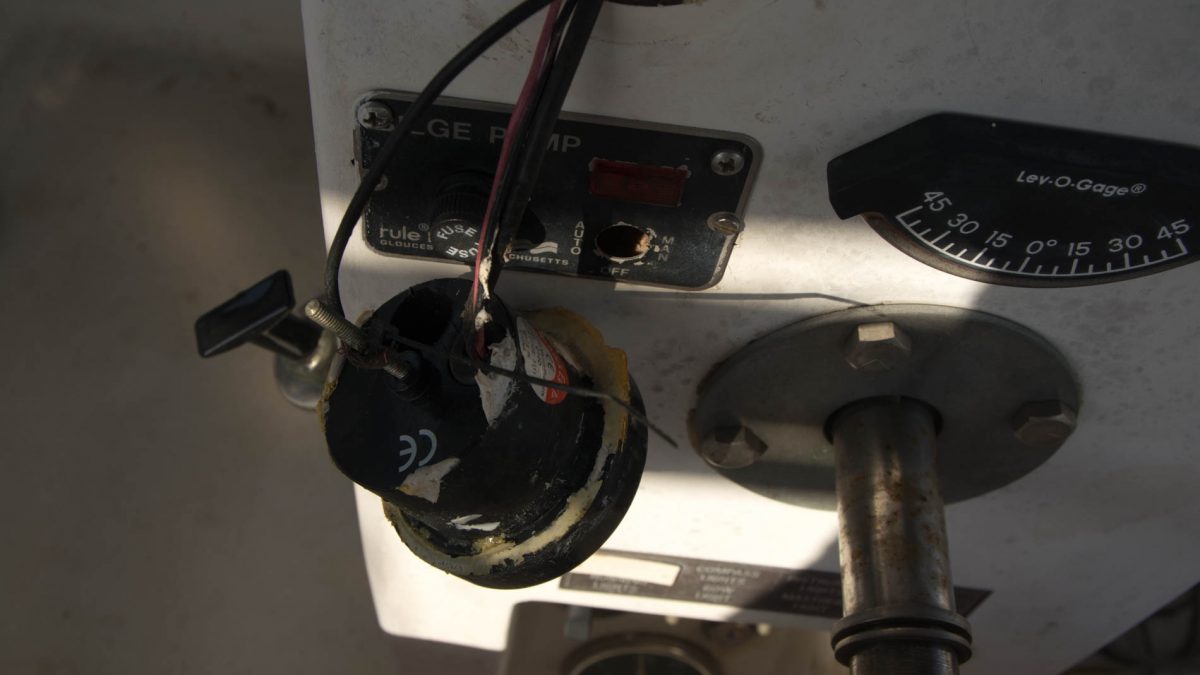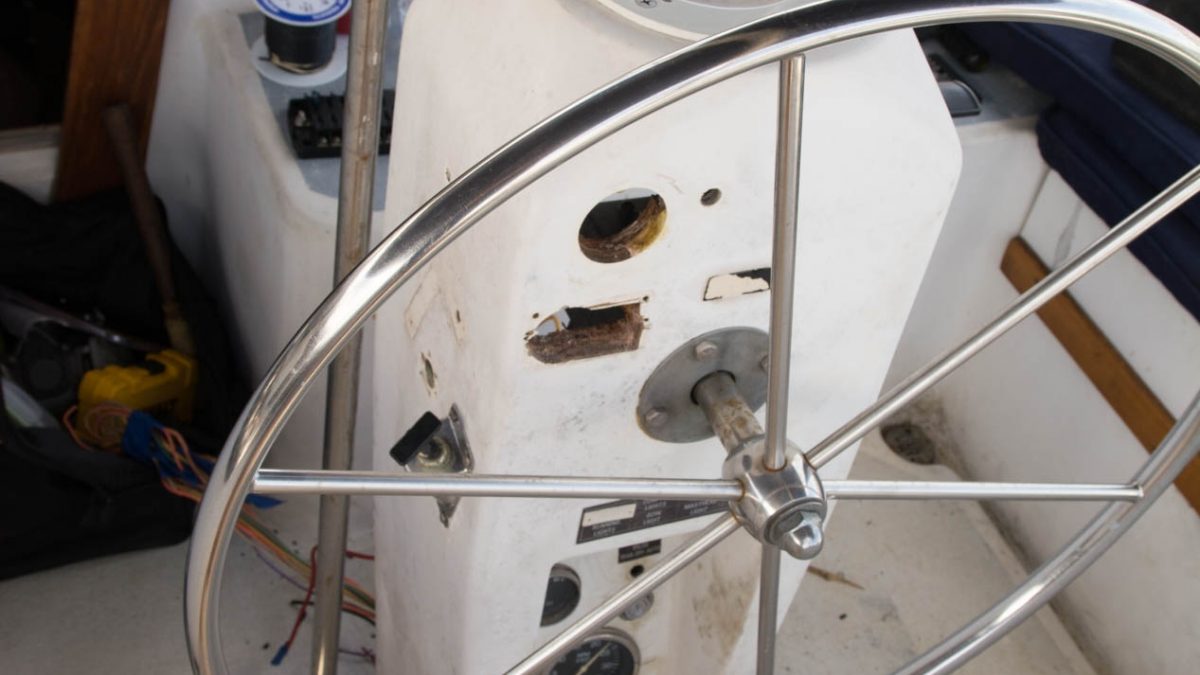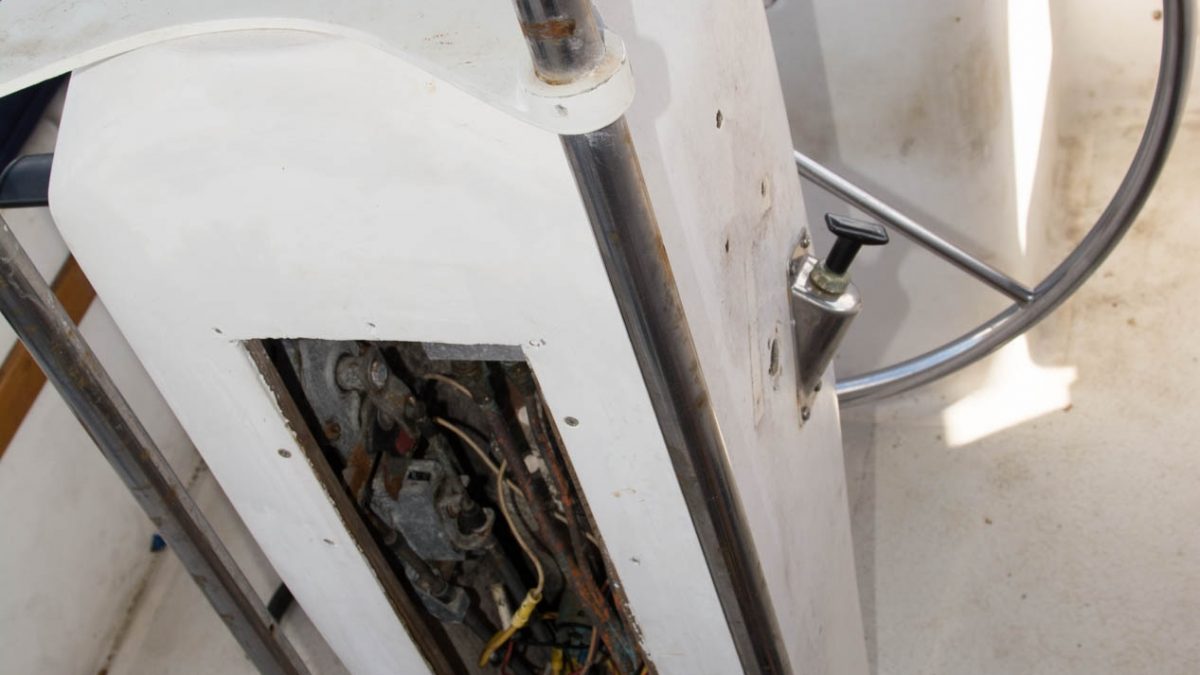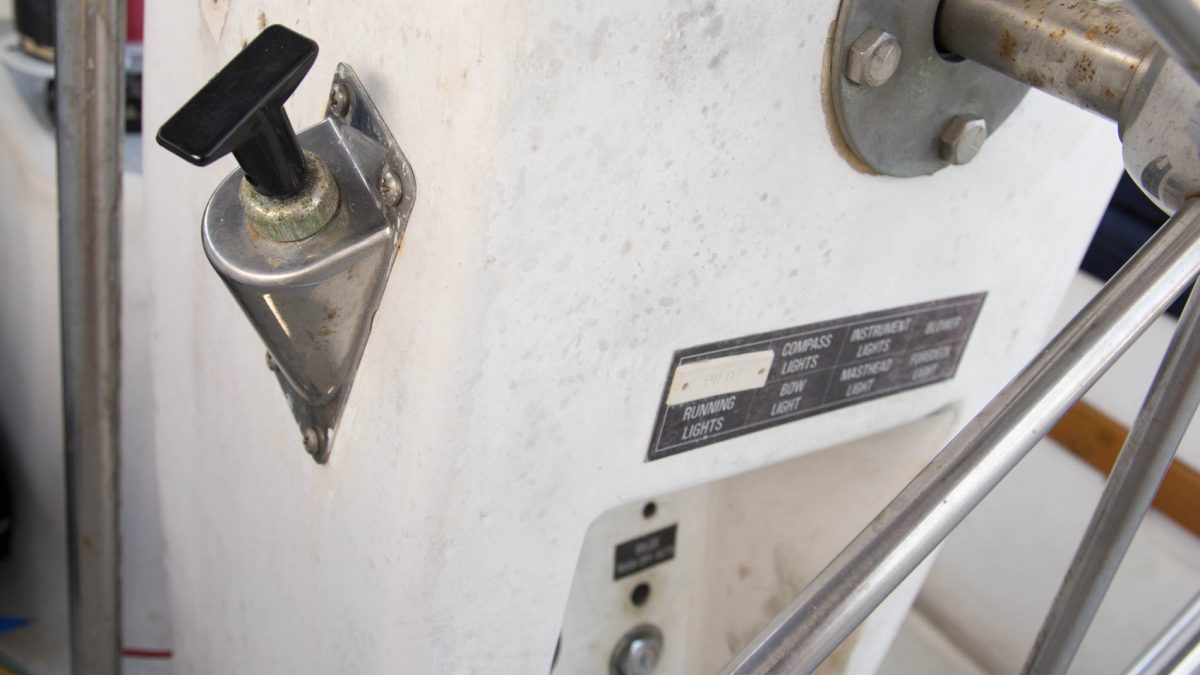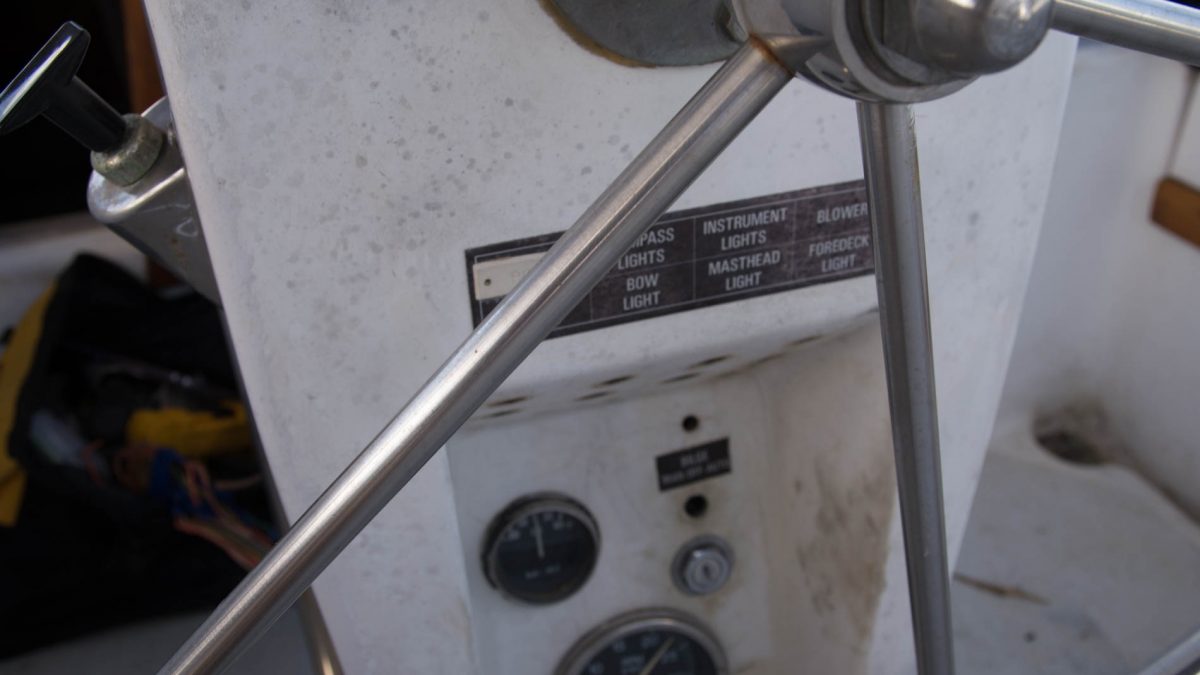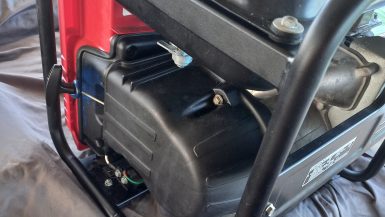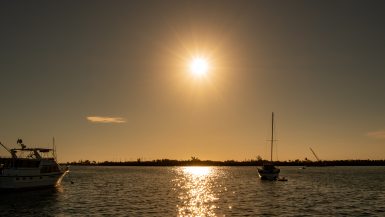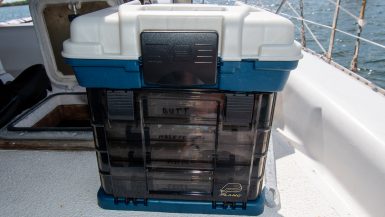It’s been awhile since I’ve posted on the blog. While I’m doing the refit I’ve decided mostly to post when I’ve completed a section or project. I work full time so have limited hours per day during the week and the weekends to work on projects so they can take awhile to see through to completion. But I am working every day, especially now that it’s daylight savings time and I have daylight hours after work.
I’ve also changed up my methodology. Before, my primary focus was getting the systems (engine, electric, etc.) all completed before working on the cosmetic. If I were working on this project full time with an open budget, I would continue working in this way. But the refit is going to take a while to complete since I’m limited in time per week that I can put towards it and am paying for this as I go. I’m tired of walking up to a tired old looking boat at the end of a workday. So I’ve started to focus on the DIY projects that improve the appearance and livability of Pomaika’i.
Here are the finished pictures of the helm station I finished up last night.
On To The Helm Station Remodel
On the Morgan Out Island 415, the helm station contains your steering mechanism, engine instrument panel gauges, and controls most of your external electronics. The previous owner had mounted, what I felt were, unnecessary items on the helm station. For some reason, the bilge pump switch was run to the helm station (which was an odd solution as the power to helm station comes from the panel breaker, and the bilge pumps should be wired directly, so it’s always on). A non-working depth gauge and fish finder were also cluttering up the helm station. On the Pomaika’i the internal wiring for all of this was left exposed for an extended period (prior to before me owning the boat), and corrosion had really attacked the electrical system. I’m replacing the complete electrical system on the boat, and the helm station seemed a good place to start.
The first step was to remove the unwanted items and to fill the holes with epoxy. I took off the large old and out-dated autopilot control from the top of the helm. I also removed the teak shelf on the port side which held a fish finder. Taking out the stand-alone depth gauge left a large hole in the station that I epoxied in. This cleaned up the structure of helm.
While I was painting the white gloss areas of the aft deck, I also painted the helm station. A good sanding to remove old oxidized gel coat and to fair the holes I’d filled in, then two coats of primer using Interlux’s Pre-Kote. I followed this with two coats of Interlux’s Brightside white gloss paint which left an easy to clean, smooth, finished pedestal to work with. That alone was worth the effort.
New Items
To the helm station, I added a new compass where the old autopilot was. While I’m a fan of navigation electronics, I learned on my trip from Fort Myers that things can go wrong. I had planned for emergencies and had multiple navigation backups, but power management was a challenge. A traditional compass would allow for quick (don’t have to find where you set the GPS) look to see what heading your one.
One of the significant deficiencies with Pomaika’i is the lack of modern USB charging stations. The helm station chartplotter will be a tablet running a remote screen for the primary chartplotter at the navigation station down below. The two slot USB charging station will be able to power this and one additional device at the helm.
Upgraded Items
As you can see in the before pictures the electrical is a nightmare of mistakes (wires jumped off other devices, mismatched wire sizes, poor connections, no fuses) and corrosion. While Hurricane Irma did no physical damage, the wind-forced rain caused many issues, and the electrical at the helm station was one of those. I’ve replaced all the engine control gauges and will completely rewire the engine harness when I’ve completed the heat exchanger replacement. I replaced all the old metal “radio shack” style toggle switches with illuminated rocker switches. Blue Sea Systems (which manufacture some electrical components I’m using on Pomaika’i) makes waterproof labels which I used to label the switches.
The throttle control handle was heavy pitted with corrosion. I was able to locate a used handle, as they are not manufactured anymore, in Canada on eBay. Looks much better 🙂
I also polished up the stainless steel wheel and support bar. The wheel cleaned up nicely, but the support bar is still in rough shape. I removed a lot of the rust and brought back some of the shine but this bar is the first thing you grab when you climb into the cockpit from the dock, and it’s scraped and scratched pretty bad. I may replace this entirely when I do the electronic displays which sit on this bar.
Still To Do To The Helm
I’m rebuilding the engine electrical harness which will include the wires to the gauges. The engine is so old you can’t purchase this any longer, so I’ve got the schematics and old wiring to follow. I’m also going to redo the wiring for the devices coming off the rocker switches. I’m replacing the old glass tube style fuse bar with a labeled blade fuse box by Blue Sea.
Down the road I’ll install a complete electronic navigation system, I’m leaning with B&G’s Zeus system, which will mean putting displays and autopilot controls on the support bar for the helm station. I may replace the bar entirely to get one with an angle that will make these displays easier to read and provide more space for them.

